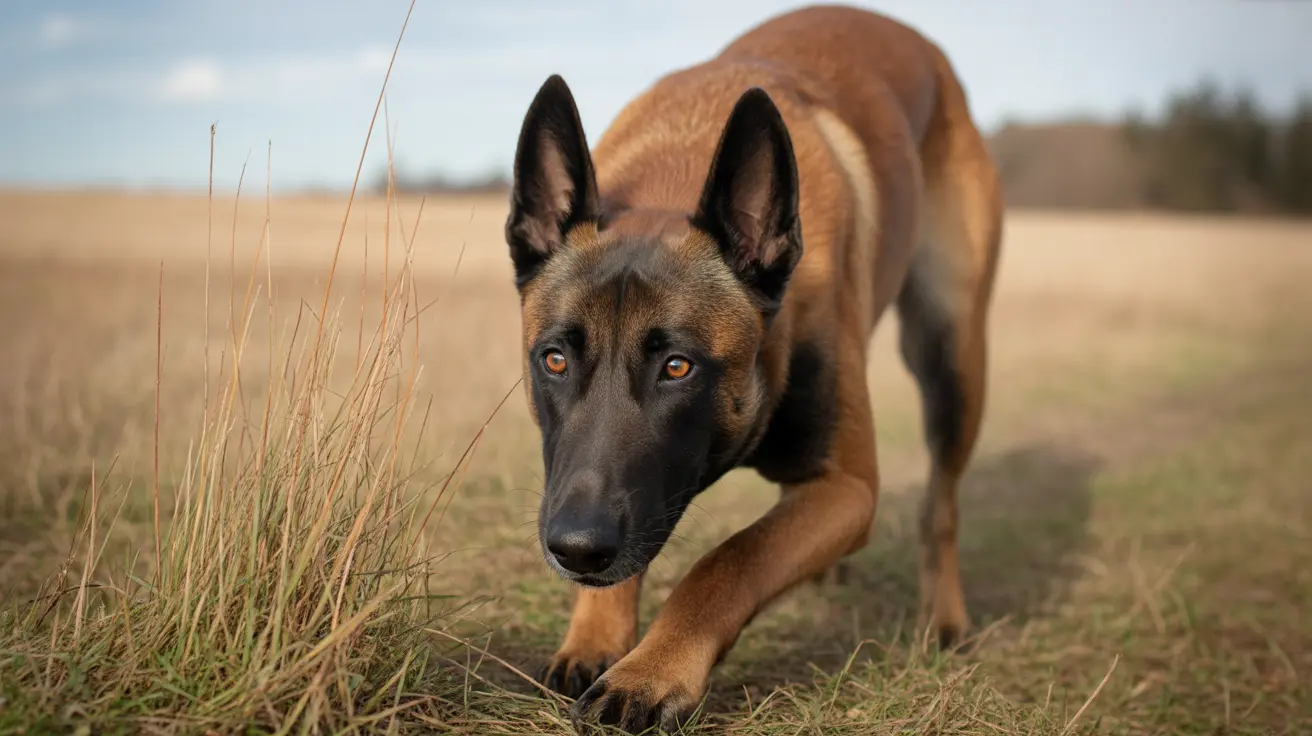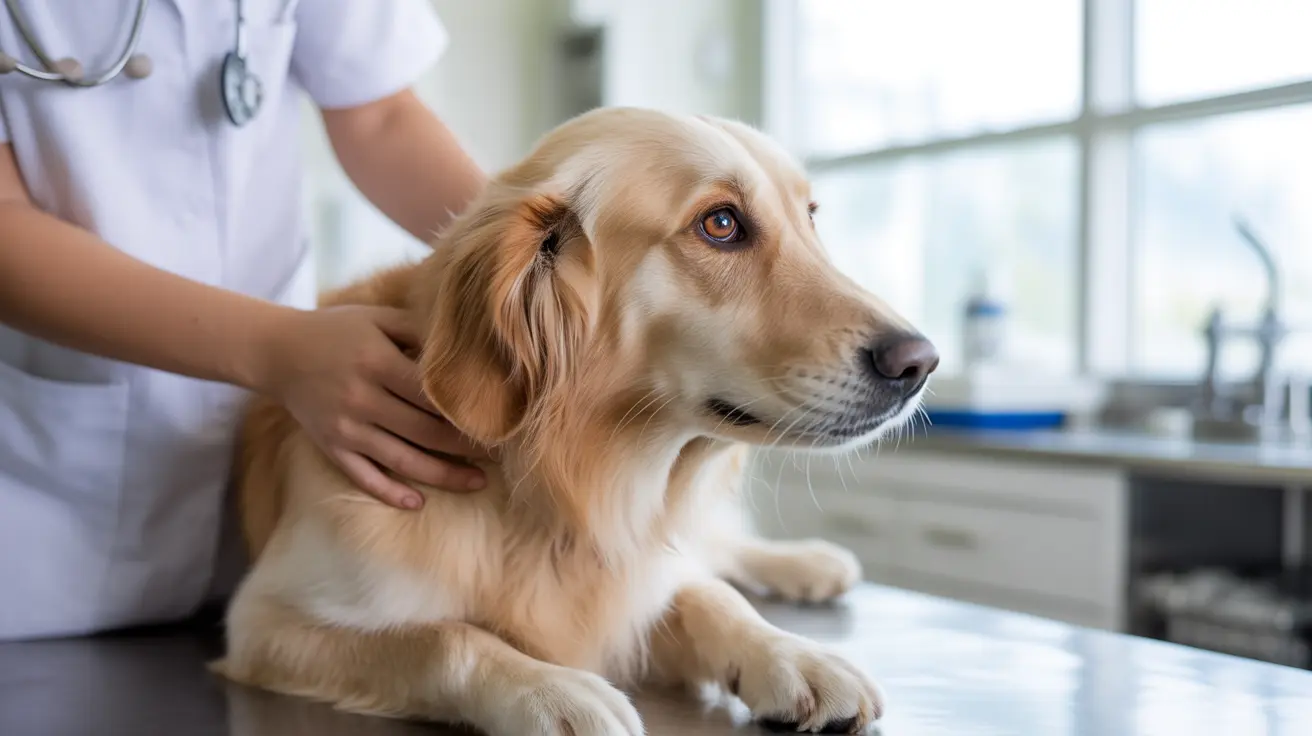Dogs Detecting Human DNA Scent: Revolutionary Research Confirms Forensic Tracking Capabilities
A groundbreaking study conducted by the Saxon Police University and the University of Leipzig has revolutionized our understanding of canine olfactory capabilities, proving that specially trained dogs can detect and track individual human DNA through scent alone. This remarkable research demonstrates that dogs detecting human DNA scent is not only possible but also forensically reliable, opening new frontiers in criminal investigations and legal proceedings.
The implications of this discovery extend far beyond traditional scent tracking methods. While dogs have long been recognized for their extraordinary ability to detect human scents through clothing, personal items, or direct contact, this study proves that DNA itself carries distinct odor markers that canines can identify and follow. With dogs possessing up to 300 million scent receptors compared to humans' mere 6 million, and a brain region about 40 times larger devoted to processing odors, these findings validate what forensic scientists have long theorized about the potential for DNA-based tracking.
This research represents the first comprehensive study to scientifically validate the forensic value of Mantrailing – the specialized technique of using dogs to follow human scent trails – specifically when based on DNA evidence. The study's success rate of 80% in identifying and following human scent linked to DNA samples establishes a new standard for forensic investigations and provides law enforcement with a powerful tool for verifying suspect presence at crime scenes.
Understanding Dogs' Extraordinary DNA Detection Capabilities
The canine olfactory system's ability to detect human DNA scent stems from their remarkable sensory apparatus. Dogs can smell substances at concentrations as low as one part per trillion, making them capable of detecting the minute chemical signatures present in human DNA. This extraordinary sensitivity is made possible by specialized structures including the Jacobsen's organ, also known as the vomeronasal organ, which serves as a secondary olfactory system specifically designed to detect pheromones and other molecular compounds undetectable to humans.
Dogs utilize what scientists call "stereo smell" – the ability to differentiate between their nostrils to localize odors with pinpoint accuracy. This capability allows them to not only detect the presence of human DNA but also determine the direction and strength of the scent trail. The moisture in dogs' noses plays a crucial role in this process, as it helps capture scent particles more effectively. Dogs instinctively lick their noses to maintain optimal moisture levels, maximizing their scent detection capabilities.
The Science Behind DNA Scent Markers
The revolutionary study demonstrated that human DNA extracted from various biological sources – including sweat, saliva, and blood – contains distinct odor markers that dogs can detect and differentiate between individuals. These chemical signatures are so unique that trained Mantrailing dogs successfully identified and followed specific human scents in 80% of test cases, even when DNA was the only scent source available.
This finding aligns with dogs' well-documented ability to detect metabolic and physiological changes in humans through scent. Just as dogs can identify illnesses, emotional states, and hormonal changes by sensing chemical alterations in human biology, they can now be confirmed to detect the molecular signatures present in DNA samples.
Forensic Applications and Police Investigation Benefits
The study's confirmation that dogs detecting human DNA scent is forensically reliable has significant implications for law enforcement agencies worldwide. Traditional Mantrailing relies on scent articles such as clothing, personal belongings, or areas where suspects may have been present. However, this new research proves that even when only DNA evidence is available at a crime scene, specially trained dogs can still provide valuable tracking assistance.
In practical forensic applications, this capability allows investigators to verify whether suspects were present at crime scenes even when physical evidence is limited to DNA samples. The 80% success rate achieved in controlled laboratory conditions suggests that with proper training and optimal environmental conditions, dogs can serve as a bridge between DNA evidence collection and active pursuit or verification of suspect presence.
Training Requirements for DNA-Based Tracking
The study involved seven specially trained Mantrailing dogs, highlighting the importance of specific training protocols for DNA-based scent detection. Unlike traditional scent training that uses personal items or direct human contact, training dogs to detect DNA scent requires exposure to extracted genetic material applied to neutral carriers. This specialized training ensures that dogs can differentiate between the unique chemical signatures present in individual DNA samples.
The training process must account for the fact that DNA scent markers may be more subtle than traditional scent sources. Dogs must learn to focus on the molecular-level chemical signatures rather than relying on stronger environmental scents typically associated with human presence.
Environmental Factors and Tracking Limitations
While the study achieved impressive results under controlled conditions, real-world applications of dogs detecting human DNA scent face several environmental challenges. Weather conditions significantly impact scent detection, as dogs sense changes in barometric pressure and static electricity that affect how scents settle and disperse. Changes in atmospheric conditions can cause scents to settle at ground level or disperse more rapidly, potentially affecting tracking accuracy.
The concentration and age of DNA samples also influence detection success. Unlike fresh human scent from clothing or direct contact, DNA evidence may degrade over time, potentially reducing the strength of detectable chemical signatures. Environmental factors such as temperature, humidity, and contamination from other biological materials can further complicate DNA-based tracking efforts.
Optimal Conditions for Success
The research indicates that successful DNA scent tracking requires careful consideration of environmental variables. Optimal conditions include stable weather patterns, minimal contamination from competing scents, and relatively fresh DNA samples. Understanding these limitations is crucial for law enforcement agencies implementing DNA-based Mantrailing techniques in active investigations.
Legal Implications and Court Admissibility
The scientific validation of dogs detecting human DNA scent has important implications for legal proceedings and evidence admissibility. With an 80% success rate demonstrated under controlled conditions, this research provides the scientific foundation necessary for courts to consider Mantrailing evidence based on DNA scent detection. However, legal admissibility will likely depend on strict protocols for training certification, chain of custody procedures, and documentation of environmental conditions during tracking exercises.
Legal experts must consider how this new capability fits within existing frameworks for both DNA evidence and canine detection evidence. The intersection of these two well-established forensic tools creates new possibilities for corroborating suspect presence while also requiring updated legal standards for validation and presentation in court.
Future Research and Technological Integration
This groundbreaking study represents the first step in understanding dogs' olfactory capabilities related to DNA detection, with researchers emphasizing the importance of further studies on environmental scent cues and practical applications. Future research directions may include investigating the optimal preservation methods for DNA scent samples, developing standardized training protocols for law enforcement agencies, and exploring the integration of canine detection with advanced DNA analysis technologies.
The potential for combining traditional DNA forensic analysis with canine scent detection capabilities could revolutionize criminal investigations. This integrated approach might allow for more rapid field identification of suspects while maintaining the precision and reliability of laboratory-based DNA analysis.
Expanding Applications Beyond Law Enforcement
While the current research focuses on forensic applications, the ability of dogs to detect human DNA scent may have broader implications for search and rescue operations, missing persons investigations, and even historical research involving ancient human remains. The technique's potential applications extend to conservation efforts, archaeological investigations, and medical research where human genetic material detection is crucial.
Frequently Asked Questions
- How accurate are dogs at detecting human DNA scent compared to traditional tracking methods?
The study demonstrated an 80% success rate for dogs detecting and following human scent based solely on DNA samples. This compares favorably to traditional scent tracking methods, though it represents the first controlled study of DNA-specific detection, so more research is needed to establish comparative benchmarks.
- What types of DNA samples can dogs detect for tracking purposes?
Research has confirmed that dogs can detect DNA extracted from sweat, saliva, and blood samples. The study applied these extracted DNA samples to neutral carriers, proving that the genetic material itself contains detectable odor markers regardless of the original biological source.
- How long can DNA scent remain detectable to trained dogs?
The research focused on controlled laboratory conditions and did not specifically address the longevity of DNA scent detection. Environmental factors such as temperature, humidity, and contamination likely affect how long DNA scent markers remain detectable, requiring further study for practical applications.
- What special training do dogs need to detect DNA scent versus regular human scent?
Dogs require specialized training to detect DNA scent because the chemical signatures are different from traditional human scent sources. The seven dogs in the study were specially trained Mantrailing dogs exposed to extracted DNA applied to carriers, rather than relying on clothing or personal items that contain multiple scent sources.
- Can this DNA scent detection method be used in court as evidence?
While the research provides scientific validation for DNA scent detection with an 80% success rate, legal admissibility will depend on establishing proper protocols for training certification, chain of custody, and documentation. Courts will need to evaluate this new technique within existing frameworks for both DNA and canine detection evidence.
- How does environmental weather affect dogs' ability to track DNA scent?
Dogs are sensitive to weather changes through alterations in barometric pressure and static electricity, which affect how scents settle and disperse. Environmental conditions can cause DNA scent markers to settle at ground level or disperse more rapidly, potentially impacting tracking accuracy in field conditions.
- What makes dogs so much better at detecting scents than humans?
Dogs possess up to 300 million scent receptors compared to humans' 6 million, and have a brain region about 40 times larger devoted to processing odors. They can detect substances at concentrations as low as one part per trillion and use specialized structures like the Jacobsen's organ to detect molecular compounds undetectable to humans.
Conclusion
The groundbreaking research confirming that dogs can detect and track individual human DNA through scent represents a revolutionary advancement in forensic science. With an 80% success rate demonstrated under controlled conditions, this study validates the forensic reliability of Mantrailing techniques based specifically on DNA evidence, providing law enforcement with a powerful new tool for criminal investigations.
As this field continues to evolve, the integration of canine olfactory capabilities with traditional DNA forensic analysis promises to enhance both the speed and accuracy of criminal investigations. While challenges remain in optimizing environmental conditions and establishing legal protocols, the scientific foundation has been laid for a new era of forensic investigation that harnesses the extraordinary sensory capabilities of specially trained dogs to unlock the scent secrets hidden within human DNA.





